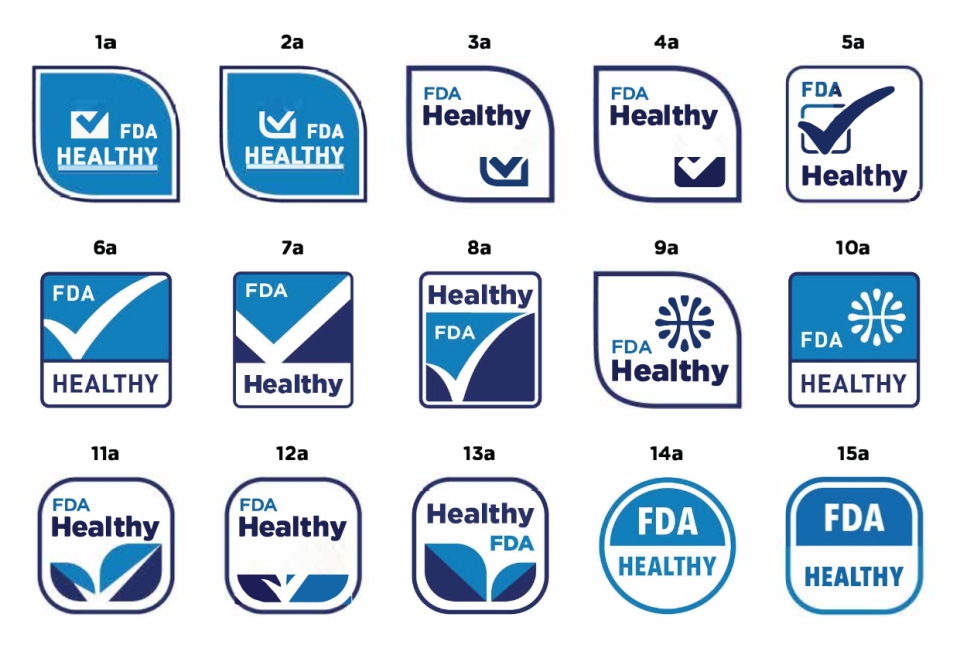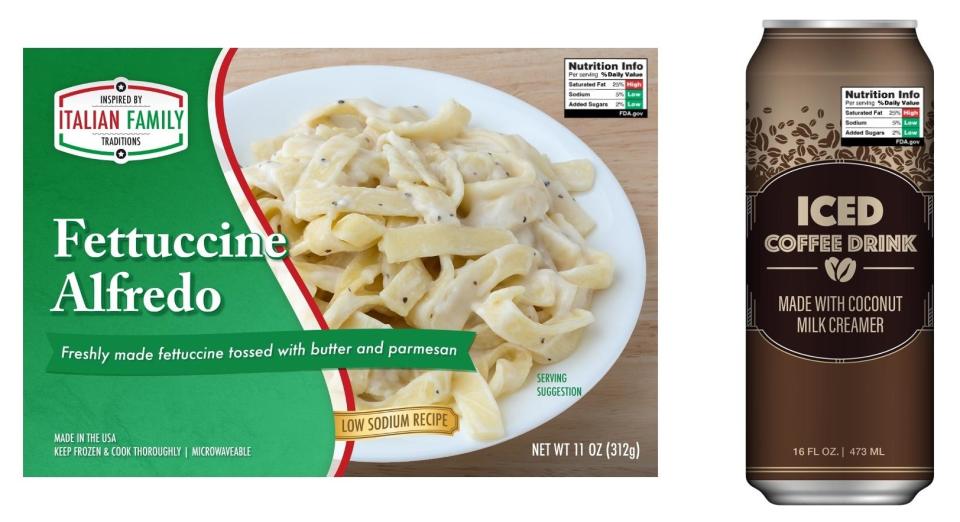FDA to develop new "healthy" logo – here's what it could look like
The Food and Drug Administration could roll out a new logo as soon as this year for companies to stamp on the packaging of "healthy" foods they make, aimed at clearing up confusion on what products actually should count as good for you.
The new symbol will follow a long-awaited update to the FDA's definition, due to be published this April, of what foods can claim to be healthy to eat under federal rules. It comes as the agency is also working on another major new rule: front-of-package nutrition facts.
Here's the latest on what we know about the coming changes.
What foods could qualify for the logo
Around 3% of manufactured foods are currently allowed to claim their food counts as healthy to eat, FDA Deputy Commissioner for Human Foods Jim Jones said. Foods like raw fruits and vegetables will still automatically qualify to be healthy foods and could use the symbol.
"There is already a regulation on the books, it was established in the '90s, that set criteria for saying food is healthy. We are basically updating it to reflect current science," Jones told reporters this month.
Jones said proposed changes to the definition, which would require certain amounts of nutrition and caps on things like added sugars and sodium, are unlikely to significantly change which foods would be eligible for the new logo at first. That percentage also does not count foods which try to get around the FDA's rules by including the word in their name, he added.
"We think that we could really sort of energize the program, the use of this, by actually coming up with a logo," he said.
The FDA's attempts to revise the definition have drawn hundreds of comments since they were floated back in 2016 under the Obama administration. While many food manufacturers say they back the agency updating the definition, several also called for changes to the drafts.
"FDA's proposal reflects a paradigm shift in how 'healthy' is defined, with proposed nutritional criteria that go beyond the latest science related to establishing healthier eating patterns," Conagra Brands said in a letter last year.
Conagra manufactures the Healthy Choice brand of frozen meals, which the company says makes it "the largest industry stakeholder impacted" by the changes.
"In a study we conducted after the release of the proposed rule, consumers indicated they would be less willing to buy meals re-designed to meet the proposed criteria compared to our current 'healthy' meals," the company said.
What the logo could look like
"Historically, manufacturers have been able to use the term as they have chosen, as long as they met the standard. Some of them just incorporate it into the name of the product," said Jones.
Jones said he hoped the logo could help consumers spot which foods actually meet their new benchmarks for what counts as healthy. After a finalized definition is published in the spring, Jones said the agency would take 6 to 12 months to work on developing the logo afterwards.
"They wouldn't have to use it, but our experience is that they probably would," he said.

While the FDA has not yet released the details of what its final logo will look like, earlier drafts studied by the agency look not unlike the U.S. Department of Agriculture's organic foods seal or the Whole Grains Council's stamp that already appears on many foods.
"The creation of the logo doesn't require regulation. It really is about working with consumers and manufacturers about what logo would best communicate this and be easily recognizable," Jones said.
New front-of-package nutrition facts
FDA's new healthy logo comes as the agency is also wrapping up research on another major proposal governing food packaging: a potential new requirement for some nutrition facts to be printed on the front of the box, similar to what some countries now require abroad.
A proposal for that rule is scheduled to be published by June, following focus group testing of several different designs to call out unhealthy levels of things like saturated fat, sodium and added sugars.
Jones said he appreciated Americans who turn around packaging to figure out what their nutrition facts are before buying them, but acknowledged many do not.
"What we have learned from consumer research is that at point of sales, it is a snap judgment, and you've got to be able to give people information in a snap, that they can process in seconds," he said.
Previous trials by the agency have looked at a variety of designs created to fit on the front of everything from bottled sports drinks to boxed frozen foods. Jones said the FDA had now settled on a final design that "consumers best understood" in the focus groups, but declined to share details of which was picked.

"We really went with what did people say, where we were trying to convey a specific message, they understood that message, so they'd be empowered to make a healthier choice," he said.
Police body camera footage released of shooting at Lakewood Church
The Smokehouse Creek Fire spreads, extending its reach from Texas to Oklahoma

